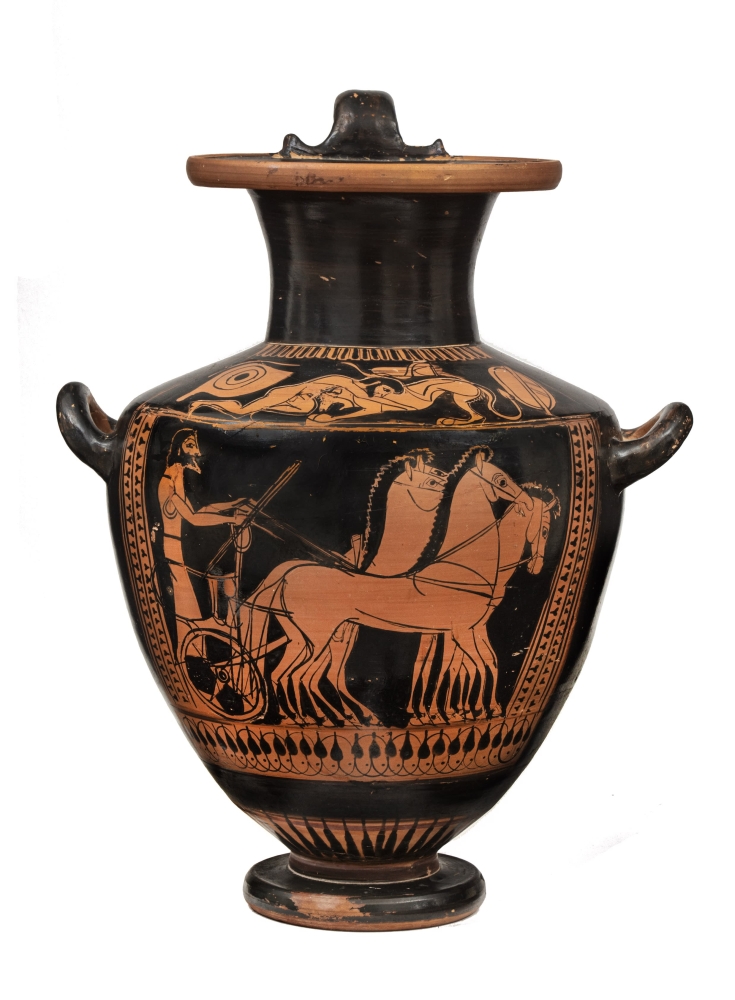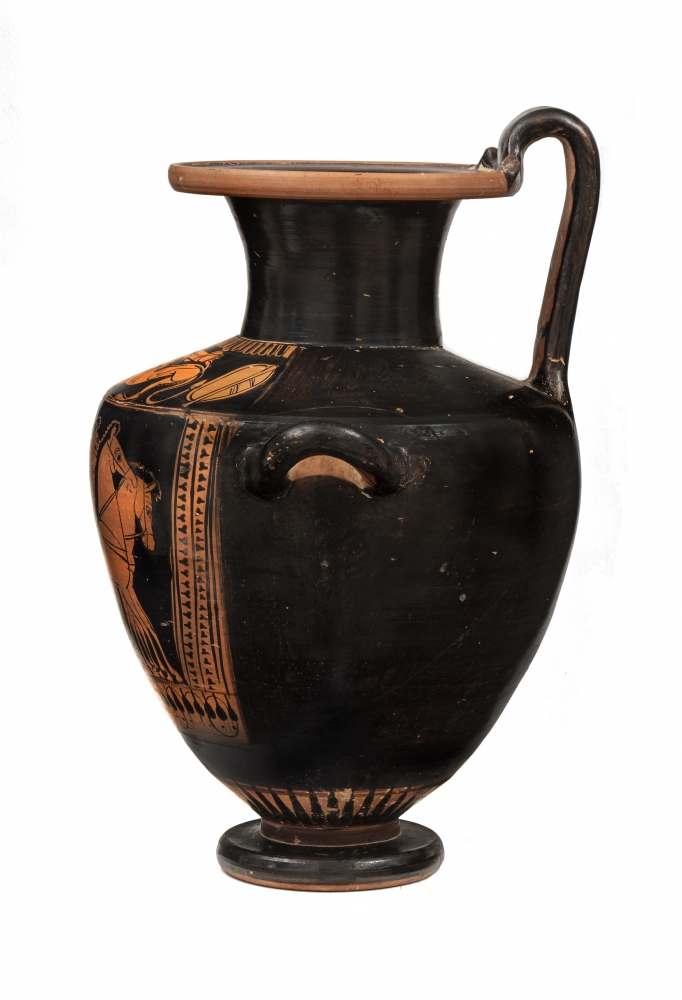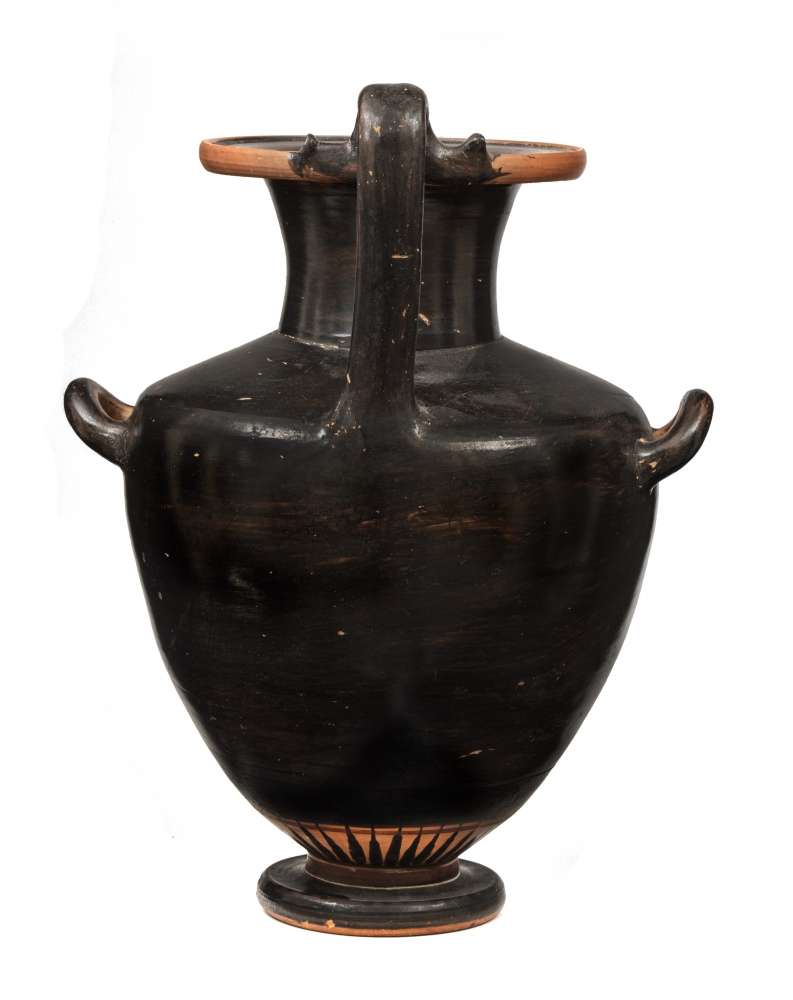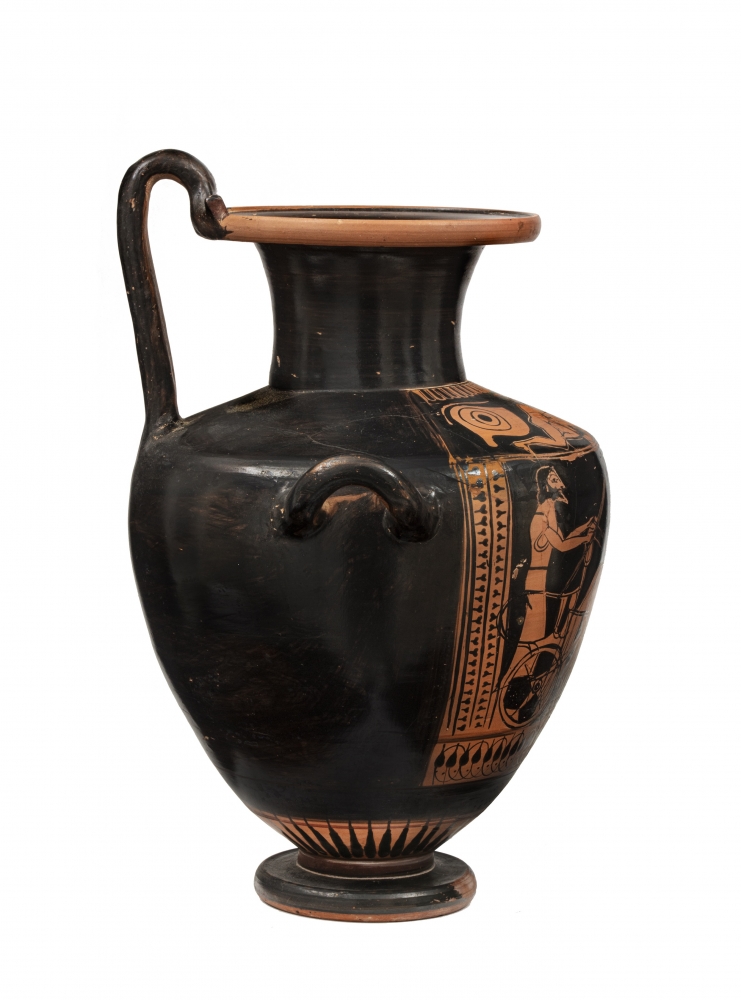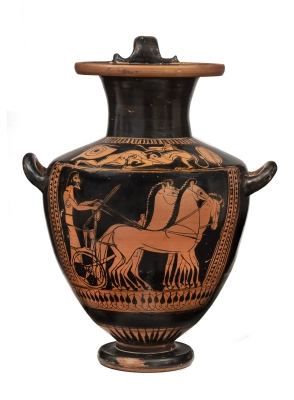Royal-Athena Galleries by 1966;
Acquired by the Phoenix Art Museum in 1969 and deaccessioned to:
Sotheby's New York, Antiquities and Islamic Art, 1 June 1995, lot no. 76.
Click here to access the factsheet.
The present vase features a torus foot, cylindrical lifting handles, and a convex pouring handle with rudimentary rotelles on the rim. The frontal panel shows a charioteer clad in a long tunic and riding a quadriga, while the shoulder of the vessel depicts Herakles wrestling the Nemean Lion, his quiver and bow shown above, his shield and club on the right, and an apotropaic eye on the left. There are tongues below the neck, linked lotus buds below the main scene, rays above the foot, and a grafitto underneath.
The painting on this vase appears to be the work of an artist not yet fully conversant in the red-figure technique, which is interesting. The figures are rough, and the hand is uncertain; moreover, the figures of Herakles and the Nemean Lion are partially outlined by incision, a technique typically used only in black-figure pottery. The hand and style date it to the last quarter of the 6th century B.C., at which time Attic workshops were developing the red-figure technique, which flourished beginning in the following century.
